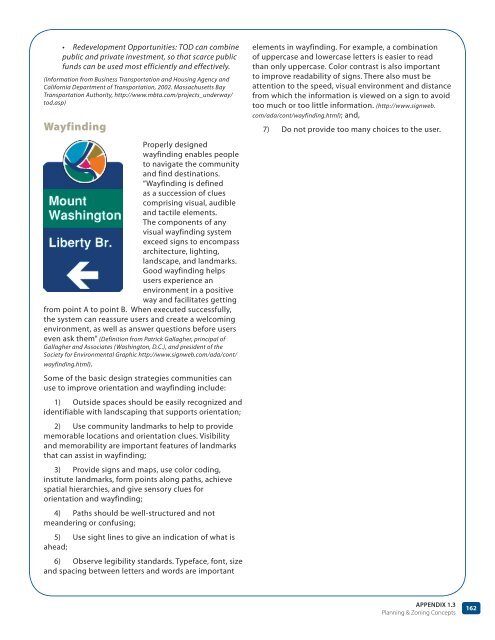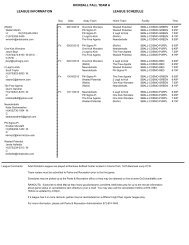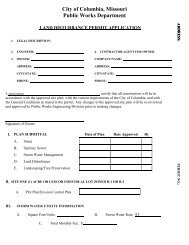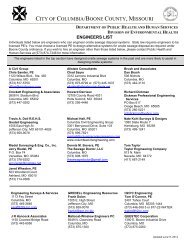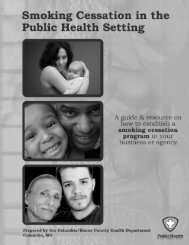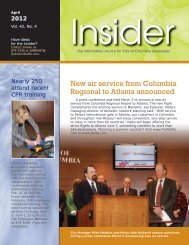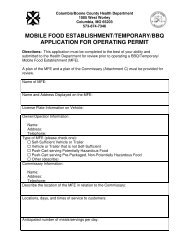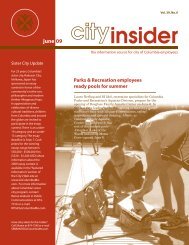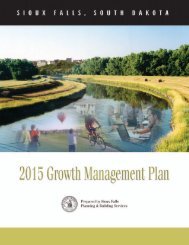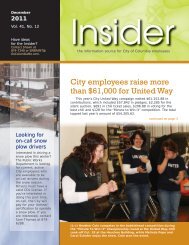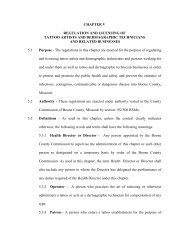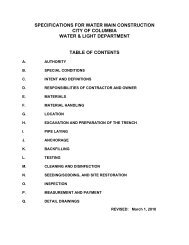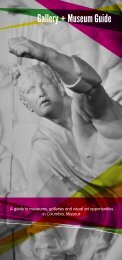Master Plan - City of Troy
Master Plan - City of Troy
Master Plan - City of Troy
You also want an ePaper? Increase the reach of your titles
YUMPU automatically turns print PDFs into web optimized ePapers that Google loves.
• Redevelopment Opportunities: TOD can combinepublic and private investment, so that scarce publicfunds can be used most efficiently and effectively.(Information from Business Transportation and Housing Agency andCalifornia Department <strong>of</strong> Transportation, 2002. Massachusetts BayTransportation Authority, http://www.mbta.com/projects_underway/tod.asp)WayfindingProperly designedwayfinding enables peopleto navigate the communityand find destinations.“Wayfinding is definedas a succession <strong>of</strong> cluescomprising visual, audibleand tactile elements.The components <strong>of</strong> anyvisual wayfinding systemexceed signs to encompassarchitecture, lighting,landscape, and landmarks.Good wayfinding helpsusers experience anenvironment in a positiveway and facilitates gettingfrom point A to point B. When executed successfully,the system can reassure users and create a welcomingenvironment, as well as answer questions before userseven ask them” (Definition from Patrick Gallagher, principal <strong>of</strong>Gallagher and Associates (Washington, D.C.), and president <strong>of</strong> theSociety for Environmental Graphic http://www.signweb.com/ada/cont/wayfinding.html).Some <strong>of</strong> the basic design strategies communities canuse to improve orientation and wayfinding include:1) Outside spaces should be easily recognized andidentifiable with landscaping that supports orientation;2) Use community landmarks to help to providememorable locations and orientation clues. Visibilityand memorability are important features <strong>of</strong> landmarksthat can assist in wayfinding;3) Provide signs and maps, use color coding,institute landmarks, form points along paths, achievespatial hierarchies, and give sensory clues fororientation and wayfinding;4) Paths should be well-structured and notmeandering or confusing;5) Use sight lines to give an indication <strong>of</strong> what isahead;6) Observe legibility standards. Typeface, font, sizeand spacing between letters and words are importantelements in wayfinding. For example, a combination<strong>of</strong> uppercase and lowercase letters is easier to readthan only uppercase. Color contrast is also importantto improve readability <strong>of</strong> signs. There also must beattention to the speed, visual environment and distancefrom which the information is viewed on a sign to avoidtoo much or too little information. (http://www.signweb.com/ada/cont/wayfinding.html); and,7) Do not provide too many choices to the user.APPENDIX 1.3<strong>Plan</strong>ning & Zoning Concepts162


